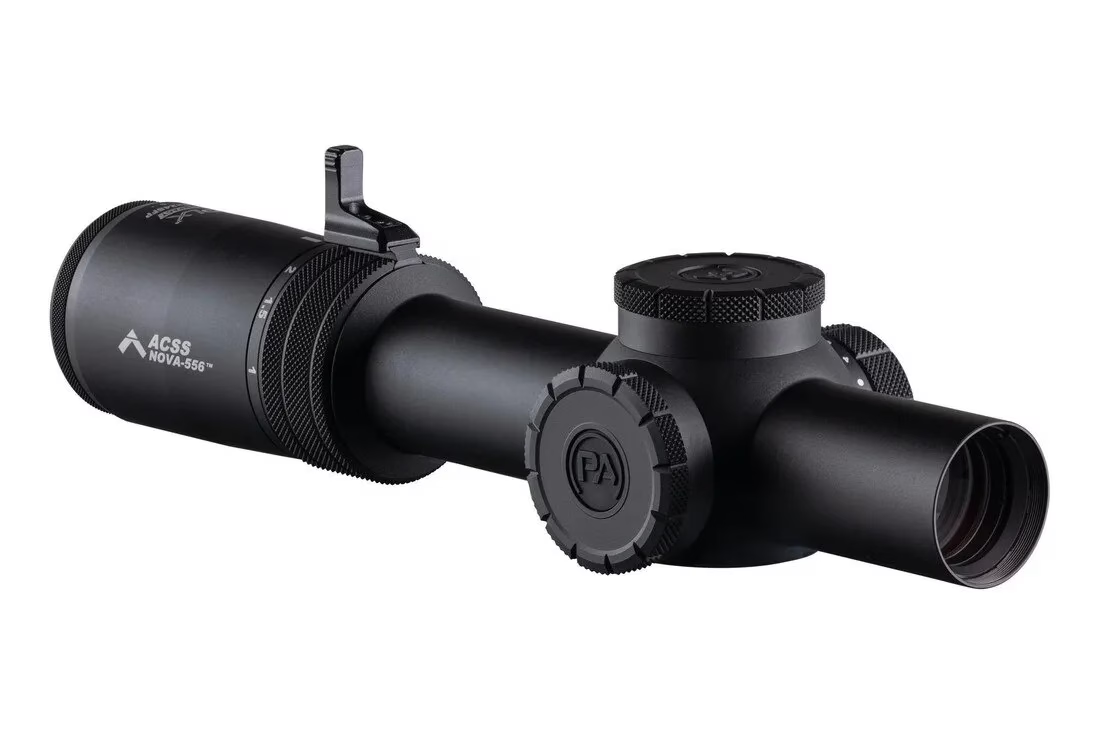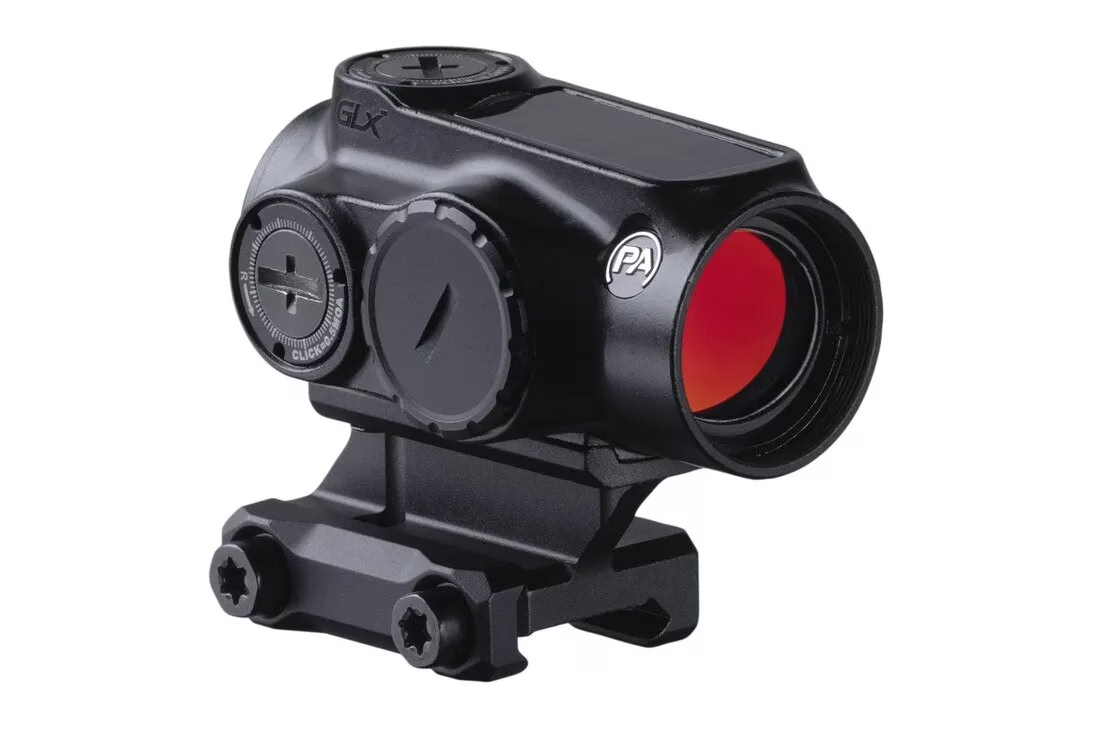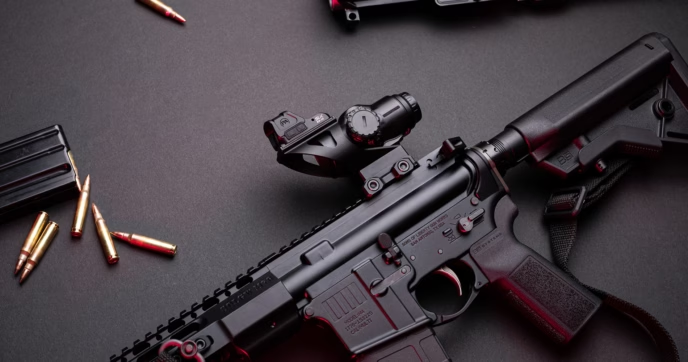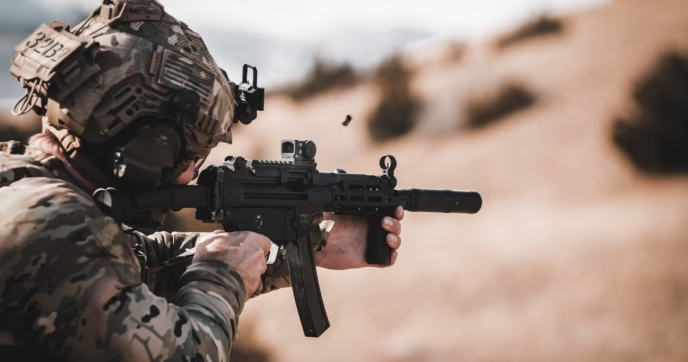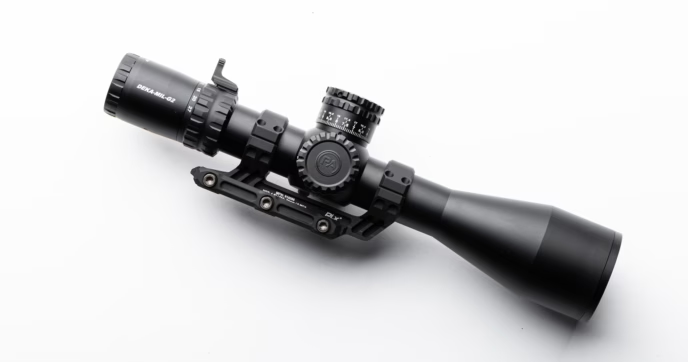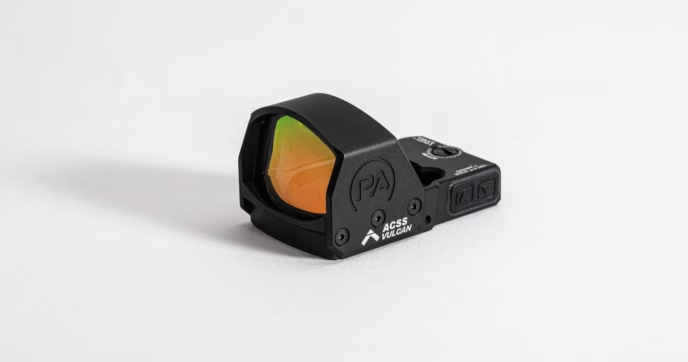The firearms industry is home to a vast array of unique pistols, rifles, and shotguns, each of which are meticulously crafted to meet different individual needs. Despite the diversity of options, all of them share one thing in common: they all can perform better with optics.
Optics come in multiple forms, ranging from the high-power rifle scopes designed for long-range precision, to the smaller reflex sights designed for close-range agility. No matter which optic you look at, each one is designed to fit different needs and preferences.
So, while it may appear that choosing an optic is a relatively simple task, it’s easy to become overwhelmed due to the sheer variety of what’s available. That said, it doesn’t have to be—by understanding how each optic performs as well as its compatibility with different firearms, choosing one becomes much simpler.
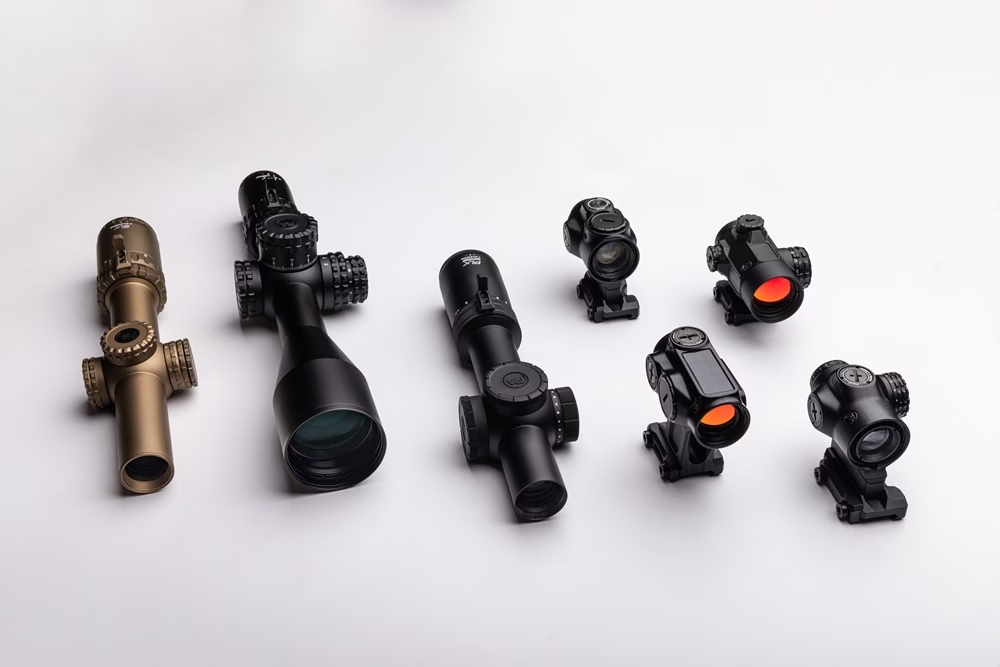
Types of Optics
As we mentioned above, optics are available in multiple configurations. For long-guns, rifle scopes are usually some of the first that come to mind, but there’s also optics like prism scopes and reflex sights to consider as well.
The same applies for handguns. Those new to the platform may assume that iron sights are the only optic available for pistols since they come standard on most, but depending on the type of pistol you have, there are a wide range of optics available such as mini-reflex sights and specialized pistol scopes.
Rifle and Pistol Scopes
Scopes are available in many configurations, each with different magnification ranges, focal planes, and reticle types. Rifle scopes are used widely across multiple shooting disciplines and most often feature a variable power design, allowing you to easily adjust the magnification to get the best sight picture possible.
Because of the variety of magnification ranges in these optics, they typically fall into one of the four categories: Low-Power Variable Optics (LPVOs), Medium-Power Variable Optics (MPVOs), High-Power Variable Optics (HPVOs), and pistol scopes.
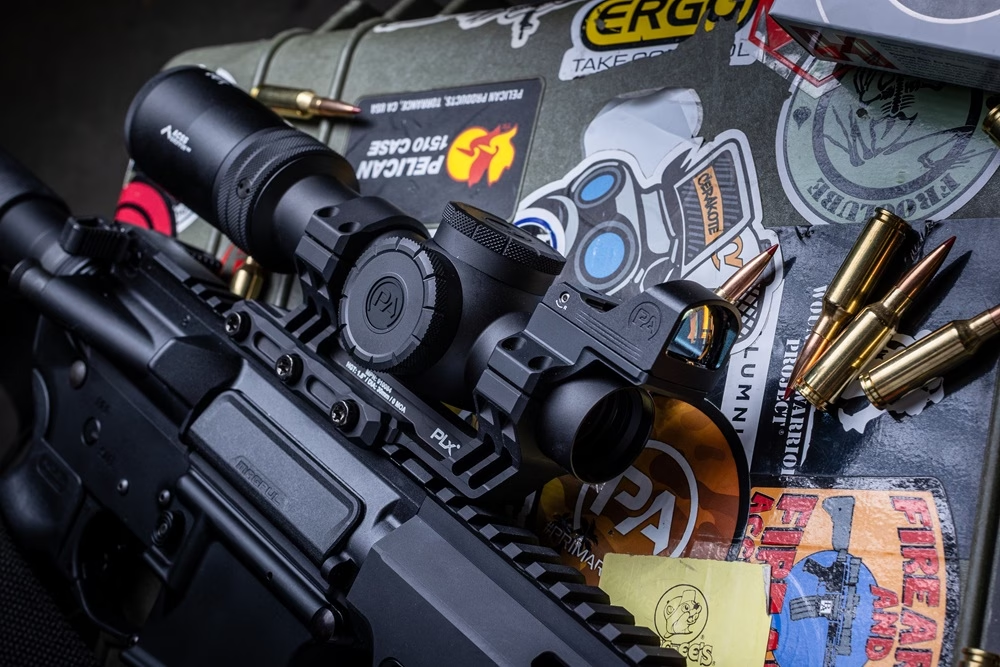
LPVOs
LPVOs offer incredible adaptability across close and medium to long-range engagements, as they’re usually offered with either a 1-6x, 1-8x, or a 1-10x magnification range. At 1x magnification, they have a wide FOV, so they offer fast target-acquisition speeds, and good agility, making them almost as fast as something like a red dot sight. For far off targets, you can easily adjust the magnification to provide the precision needed for landing hits on target. Because of their versatility, LPVOs are most often ran on carbines like the AR-15.
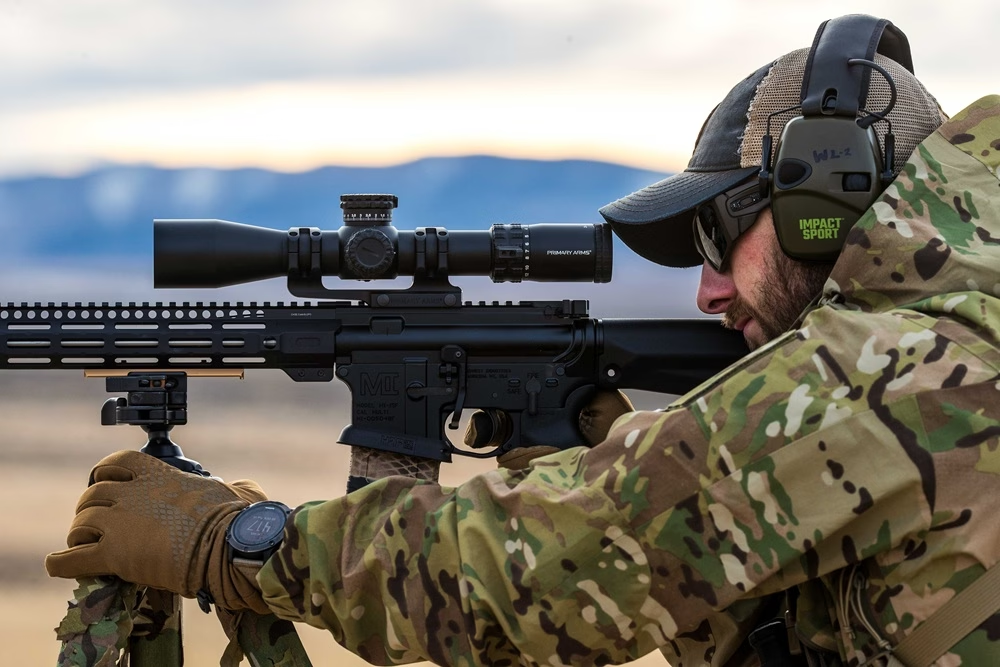
MPVOs
MPVOs are another versatile optic variant that offers a good blend of medium- and long-range performance. MPVOs are commonly offered with anywhere from a 2-10x, 4-16x, 3-18x, or a 2.5-20x magnification range, and depending on which scope you opt for, they can range out to over 1,000+ yards in some instances. Although they’re designed for engagements at further distances, they’re still rather adept in close range applications—the caveat being: they don’t offer the same agility as LPVOs at low magnification. As such, it’s common to see these optics being fielded on everything from SPR and DMR builds to bolt-action rifles.
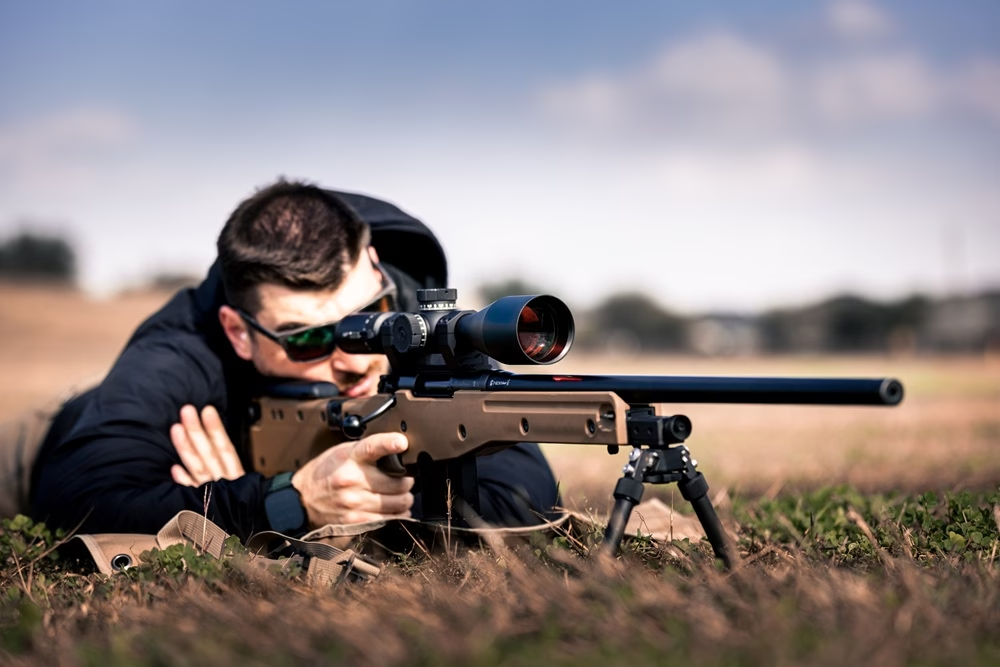
HPVOs
HPVOs encompass some of the most powerful rifle scopes around, offered in a vast assortment of magnification ranges like 4.5-27x, 5-30x, 4-32x, and even upwards of 6-36x, to name a few. Depending on the model you look at, these optics can range out to beyond 1,500+ yards in some instances, making them ideal for long-range marksmanship. These optics are most used on bolt-action rifles, though they can be used on large-frame semi-autos as well.
Pistol Scopes
Finally, pistol scopes are a unique scope option, reserved for specially designed handguns like magnum pistols and revolvers. Compared to other pistol optics, they aren’t all that common, with them being primarily used for hunting or other specialized applications. To be used properly, they have extra-long eye relief, and they often come with a fixed magnification level, though some options can come have variable magnification. Both rifle and pistol scopes have a similar construction and functionality, something we touch more on in our guide, “How Does a Rifle Scope Work?”.
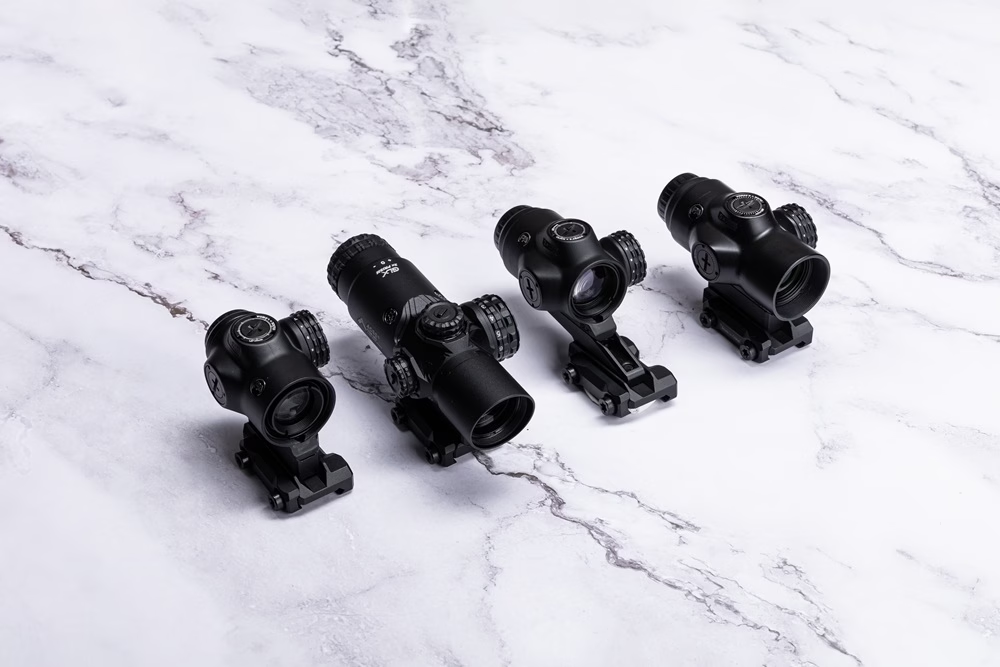
Prism Scopes
Prism scopes are a unique subset of rifle scopes that effectively blend the compact size of reflex sights with the construction of rifle scopes. We discuss their design and advantages at length in our guide, “What is a Prism Scope?”, but, by design, prism scopes offer several advantages over other optics like reflex sights.
For starters, prism scope reticles are etched, not projected, so they can house a plethora of complex reticle patterns that have elements like BDC holds, crosshairs, chevron center aiming points, and more. Prism scope reticles can be illuminated as well, but since they’re a physical element, they don’t need to be illuminated to be used.
Prism Scope Magnification
Another unique facet of prism scopes is their magnification levels. Rather than coming with variable magnification, they come with fixed magnification that usually ranges anywhere from 1x to 6x.
1x prism scopes are very similar to reflex sights in that they offer fast target acquisition speeds and a wide FOV. Further, select 1x prism scopes can be used with magnifiers as well for better performance at further distances. If you’d rather have fixed magnification, 2x and 3x prism scopes are within the visual sweet spot that allows you to easily aim with both eyes open, while still having some magnification. At these magnification levels, you’ll have a good blend of close and medium range utility, but they won’t be as fast as a 1x model.
Lastly, 4x, 5x, and 6x prism scopes offer the most in terms of ranged performance. However, since they’re fixed at such high magnifications, their close-range performance takes a hit, making them best suited for dedicated long-range applications like hunting. Although this may seem like a drawback, they make up for this with their light weight. For instance, a 1-6x LPVO can weigh nearly 18 ounces in some cases, while optics like the Primary Arms Optics SLx 5x MicroPrism weigh only 8.5 ounces—less than half the weight.
We’ll touch more on them later, but optics like mini-reflex sights can be used as an offset optic with the right mount. Mounts like on a piggyback or offset mounts allow you to quickly switch between optics for both close- and long-range use, with optics like the PLx HTX-1™ being a solid choice to consider. However, it’s also worth mentioning that you can’t use magnifiers with prism scopes that have any magnification higher than 1x. Doing so results in excessive scope shadow, rendering them ineffective.
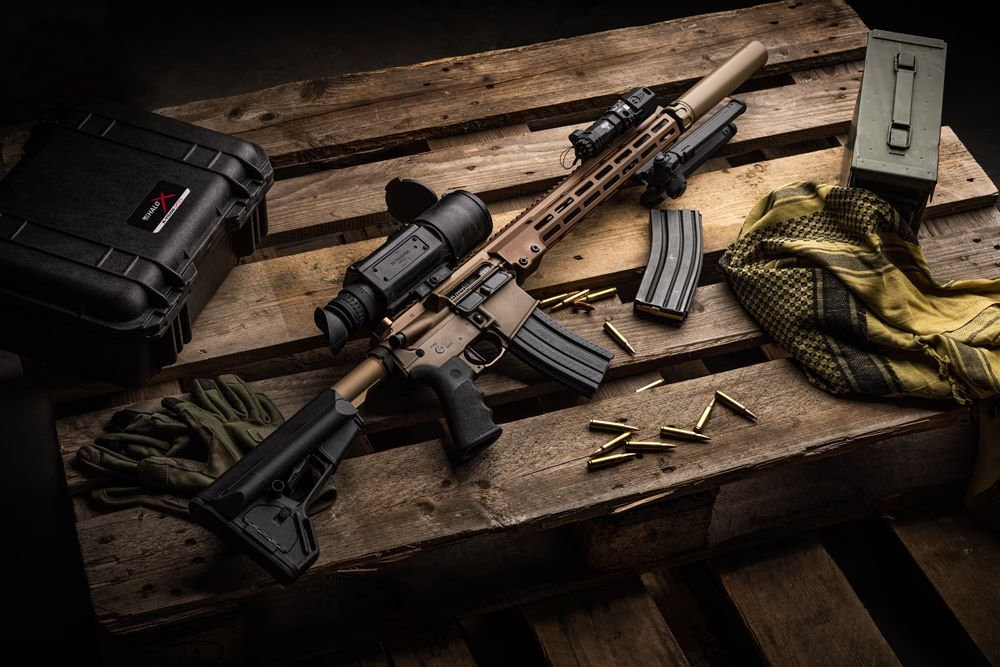
Thermal Rifle Scopes
Thermal rifle scopes are a specialized type of rifle scope that’s designed for use in night-time or low-light environments. We go more in-depth on their capabilities in our beginner’s guide to thermal optics, but below is a summary of their capabilities:
The main distinction that separates thermal scopes from regular rifle scopes is their ability to project an image based on infrared radiation, or heat signatures. They’re equipped with specialized sensors that detect heat signatures, which are then converted into an image and projected to the user.
Depending on what thermal scope you use, your sight picture can be made up of colors like reds, yellows, and blues to differentiate between warmer and cooler elements, or it can project an image in black and white. Regardless, the warmer something is, the brighter it will appear through your scope (bright yellow/orange or white, depending on your scope). Either way, since they don’t use light to form the image, they can effectively be used as a sort of night vision device, making them a favorite amongst hunters.
Types of Thermal Scopes
Like standard rifle scopes, thermal scopes are available in different configurations, with the two most common being thermal scopes and clip-on thermal units. Thermal scopes, as mentioned above, have a similar construction to standard rifle scopes, but are a bit larger to accommodate their extra electronic components. Clip-on thermal units, in contrast, act as a separate optic that can be used in conjunction with other optics like reflex sights and regular rifle scopes. In some instances, they can even be mounted to helmets as well.
Regardless of which thermal sight you look at, they’re mostly available for rifles. With that in mind, there are specialized reflex sight options with thermal imaging capabilities like the Holosun DPS-TH, which is designed for handguns. And, if you’re interested in a smaller thermal optic for rifles, you can also opt for the Holosun DRS-NV.
Reflex Sights
Reflex sights are among the most popular optics for both handguns and rifles, offering wide FOVs and fast target acquisition speeds. The term “reflex sight” often gets thrown around to describe every compact optic that projects a dot, or other style reticle, but it encompasses multiple optics. In fact, open-emitter sights, red dot sights, and holographic sights are all reflex sights.
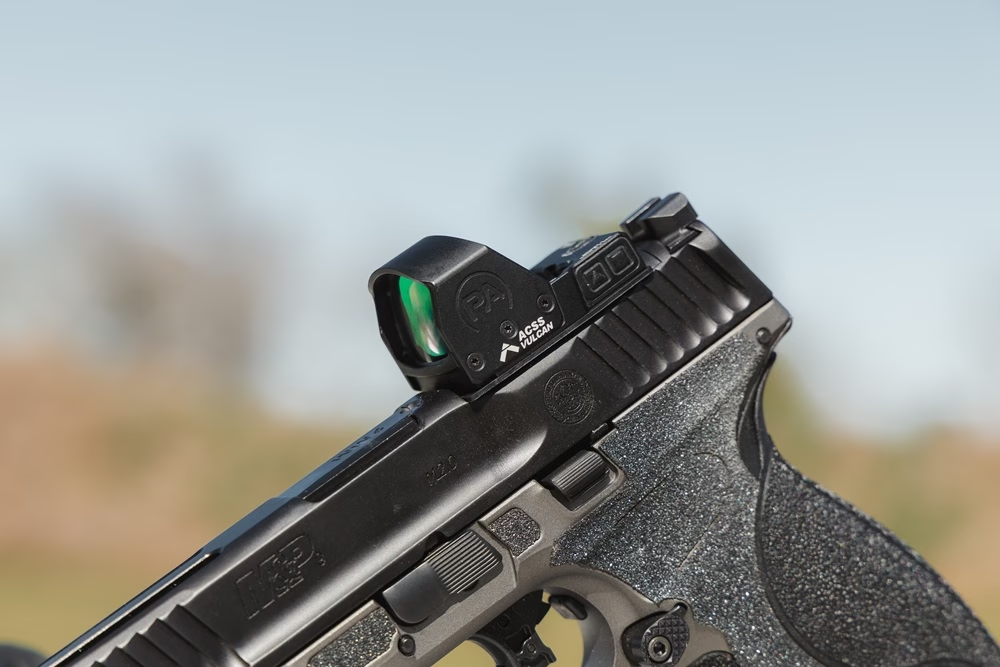
Open-Emitter Reflex Sights
Open-emitter reflex sights, as their name suggests, feature an open-emitter design where the optic body doesn’t enshroud the entire optic. As such, they’re relatively simplistic in their construction, coming with only one lens. While this seems like a significant disadvantage at first since it exposes the emitter diode, their open design gives them a much wider FOV compared to other reflex sight options, and they’re generally much lighter too.
Currently, open-emitter optics most often come in the form of mini-reflex sights designed for pistols. That said, there are still some full-size open-emitter reflex sights designed for rifles available too, they just aren’t as common nowadays.

Red Dot Sights
Red dot sights are easily one of the most recognizable reflex sights around, with them often being the go-to optic choice for many. Like many of the optics mentioned thus far, we go more in-depth on their characteristics in our guide, “How do Red Dot Sights work?”, but to summarize them, red dot sights are characterized by their use of an enclosed design and two optic lenses.
Like open-emitter sights, they have a wide FOV and are easy to aim with both eyes open, making them a solid choice for fast paced or dynamic applications that require precision and agility. Their enclosed design protects the emitter diode, while their rigid optic body makes them more durable than open-emitter sights. The rugged reliability of red dot sights makes them a standout pick for rifles, and they’ve also become a popular choice for handguns as well.
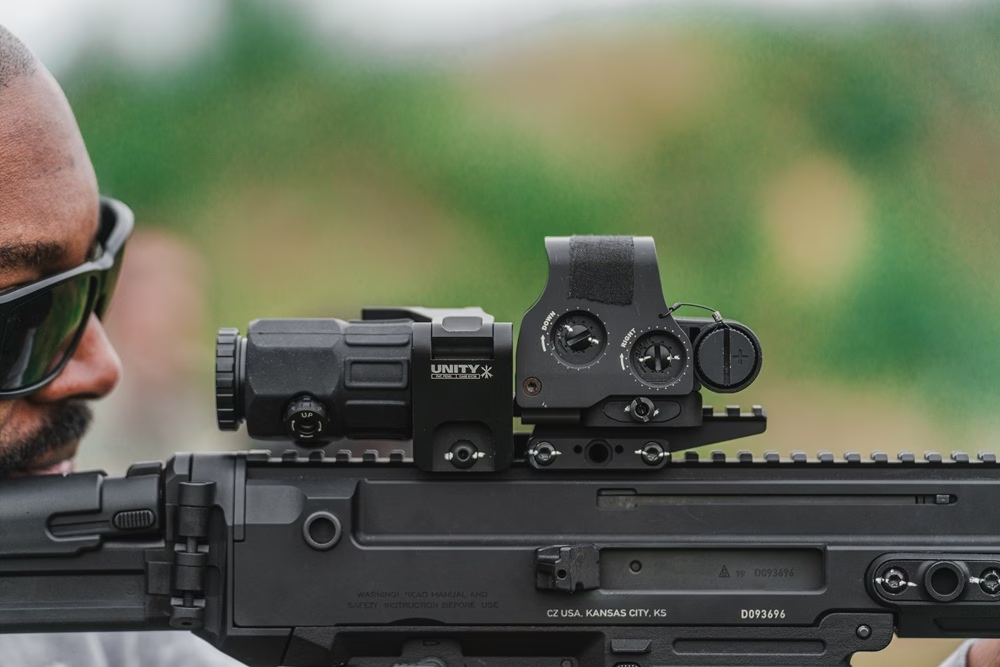
Holographic Sights
Holographic sights are a unique reflex sight option. Whereas open-emitter reflex sights and red dot sights function the same way by collimating light projected by an emitter diode onto the objective lens to form the reticle image, holographic sights differ in that they bounce light off several surfaces to form a holographic reticle that floats in between the optic’s lenses.
By using a holographic reticle image, there isn’t as much parallax shift when aiming, and they also have excellent night vision performance. These optics have a more robust design compared to the other reflex sights mentioned, with them being renowned for their durability. Compared to other reflex sight variants though, they aren’t as widely available since the only brands making them for the American market are EOTech and Vortex Optics.
Which is best?
No one reflex sight is inherently ‘better’ than the other, but they each have their own pros and cons. For instance, open-emitter options are lightweight and offer incredibly wide FOVs, but their open-emitter design leaves their emitter diodes susceptible to occlusion dirt, dust, water, and other environmental hazards. Red dot sights, while still light, have a slightly narrower FOV due to their enclosed design, but they make up for this with their added durability. Finally, holographic sights are exceptionally durable and offer excellent night vision performance, but they’re bulkier than other reflex sights and are a more expensive option.
Regardless, each one is a solid pick for a multitude of applications. No matter which one you end up choosing, there’s an assortment of accessories and optic mounts available for each one.
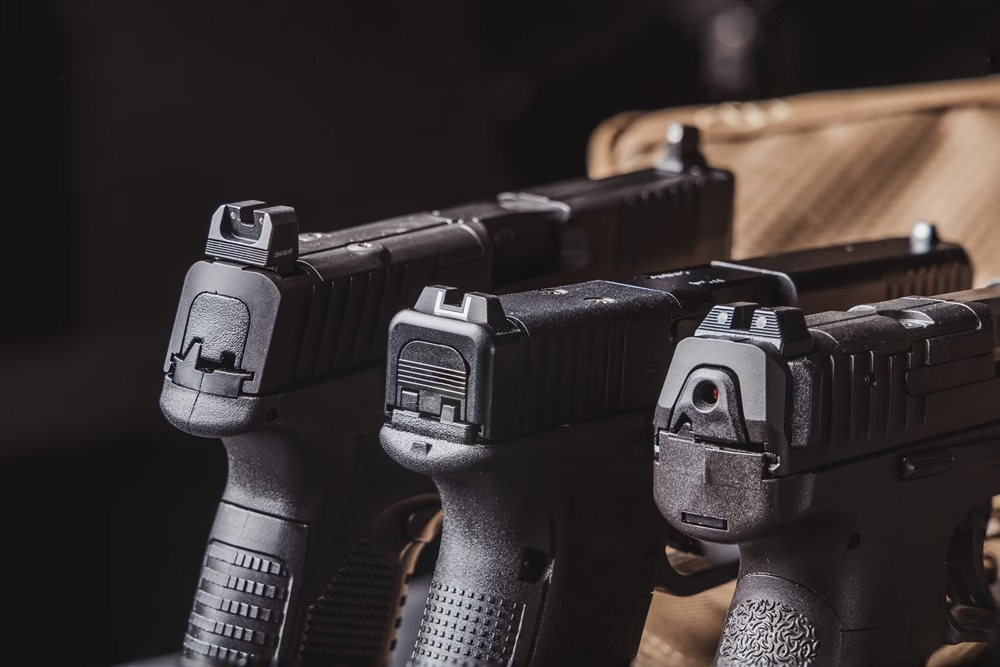
Iron Sights
What’s the alternative to optics, if none of the aforementioned options suffice? In that case, you’re looking at running the most basic sighting system available: iron sights. Iron sights are some of the oldest sight options available for firearms, introduced around the mid 1400s. Nowadays, they’re basically the standard optic for rifles and pistols today, despite being easily outclassed by modern optics mentioned above.
Whether you look at rifle or pistol sights, almost all iron sights consist of a front and rear sight post. Rear sights on pistols most often look like two posts with a notch in the middle, having either a square-, U-, or a V-shaped notch, while the front sight consists of a single front post that corresponds with the rear notch shape. Depending on the sights, you may need to use specific holds when aiming, but we cover this in our guide, “Pistol Sights 101”.
Rifle iron sights can vary depending on the platform. They can either have shaped notches, ghost-rings, or aperture style rear sights. The front sights are rather simple, with them having just a singular front post in most instances. Depending on the rifle you have, these sights can either be integrated into the rifle, like on the Ruger Gunsight Scout bolt-action rifle, or they can be interchangeable like Magpul’s MBUS sights.
Conclusion
Optics are easily some of the best upgrades available for firearms, and there’s no shortage of options to pick from. With options, however, comes choices, and choosing just one can be a challenge. As we’ve discussed the several types of optics available for both rifles and pistols, it’s important to recognize that at the end of the day, the right optic is the one that best corresponds with your firearm as well as your own personal needs.
For rifles, scopes like MPVOs, HPVOs, and magnified prism scopes offer the most utility in long-range shooting applications, while 1x prism scopes and reflex sights have more of an edge at close-range. If you want more adaptability out of your optic setup, LPVOs and red dots/1x prism scopes with a magnifier are a solid pick.
Pistols are mostly limited to either iron sights or mini-reflex sights. Mini-reflex and pistol red dot sights are faster than iron sights, offering quicker target acquisition speeds and better situational awareness. Still, not every pistol comes with an optic ready slide, and with proper training and the right sight set, iron sights can be a solid choice. If you have a larger pistol like a magnum revolver though, you could also opt for a pistol scope.
Before you make any final decisions though, it’s crucial to take your needs, preferences, and intended purpose into consideration before buying. So long as you have, you won’t be hard pressed to find the best optic for you. And, regardless of which one you pick, you’ll need to know how to properly maintain it. Our guide on how to clean and maintain your optics covers everything you’ll need to know.
